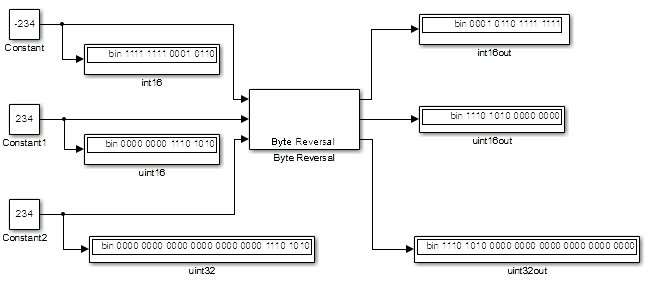Byte Reversal
反转输入字中的字节顺序
库:
Embedded Coder /
Embedded Targets /
Host Communication
描述
Byte Reversal 模块更改输入到该模块的数据中字节的顺序。当进程在使用不同端序的目标计算机之间进行通信时,例如在采用小端的 Intel® 处理器和其他大端处理器之间进行通信时,请使用此模块。默认情况下,Texas Instruments® 处理器是小端处理器。
要在具有不同端序的处理器之间交换数据,请在紧挨发送模块之前和紧挨接收模块后放置一个 Byte Reversal 模块。
此模型显示三个输入的字节反转。每条路径的输入端口和输出端口都匹配。

端口
输入
输出
参数
版本历史记录
在 R2011a 中推出